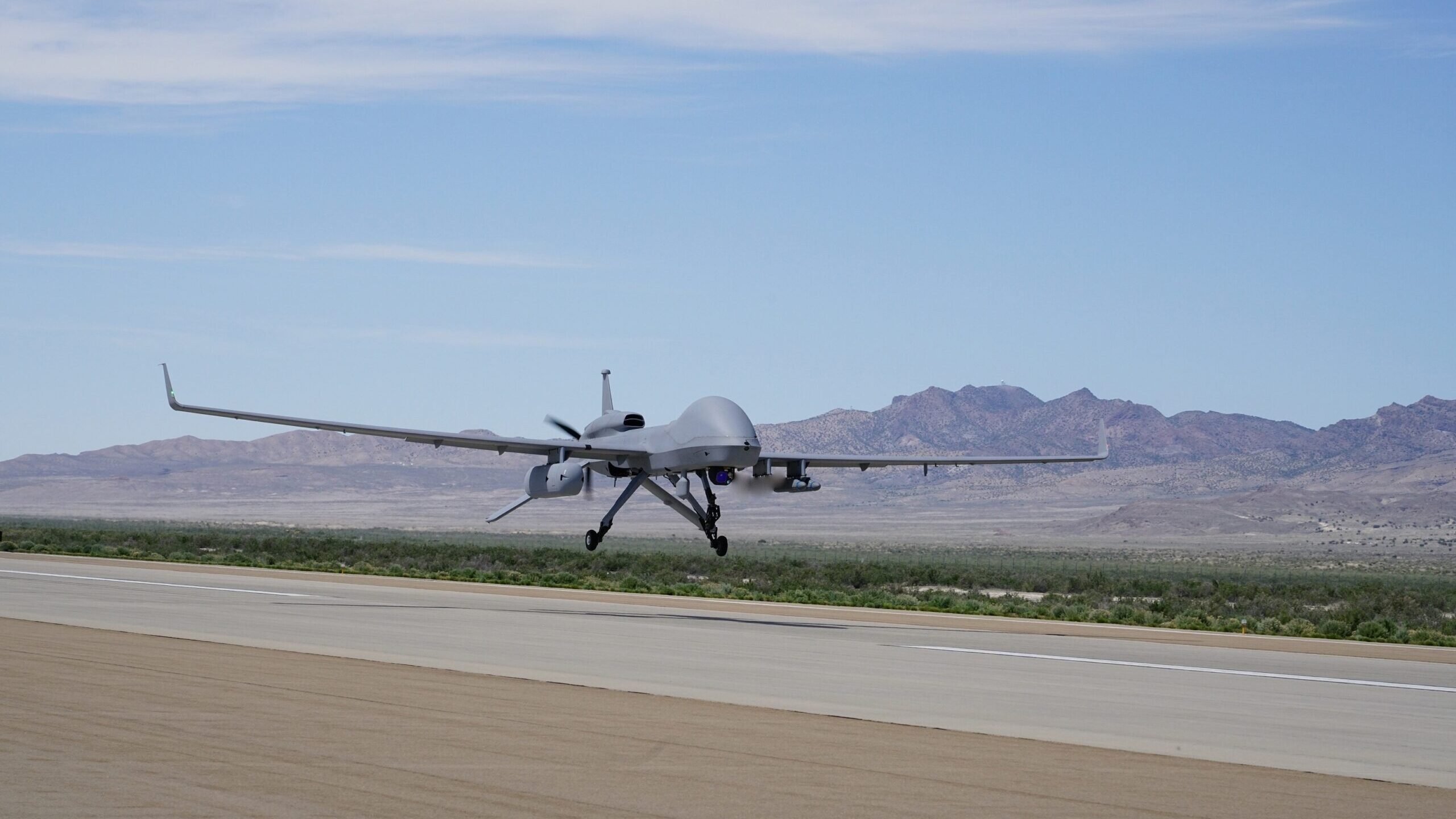
The MFEW-AL system’s purpose and ability is to create a clear picture, in real time, of the EMS in any given area it is flying over. (John Higgins/US Army)
WASHINGTON: The US Army is updating the requirements for its Multi-Function Electronic Warfare-Air Large (MFEW-AL) program, as the service builds forces for multi-domain operations and pivots to operate in the vast distances of the Pacific.
The MQ-1C Gray Eagle-mounted jamming pod is expected to be an integral part of the Army’s future electronic warfare arsenal, which it is trying to rebuild after deprioritizing EW after the Cold War. The Army zeroed out procurement funding in its fiscal 2022 budget request for the jammer, but it could be on track for a production decision later this year.
“There’s a requirements update in the works based on what we’ve learned in terms of how the technology works, and what the right performance is,” said Ken Strayer, program manager electronic warfare and cyber at PEO Intelligence, Electronic Warfare and Sensors. “Expanding the full deployment of MFEW and where it’s going to end up long term, those are questions we’re having within the Army.”
The MFEW-Air Large pod, made by Lockheed Martin, is designed to provide brigade combat teams with offensive electronic warfare capabilities. Its original intent was for use by the service’s combat aviation brigades, but as the service shifts to the Pacific, MFEW may meet new needs.
“With this concept of MDO, we’re learning that MFEW does have an extended range and it can sense and effect in ranges that we believe are effective,” Strayer said. “But we lack really the operational test data that proves that out.”
Strayer said that the Army has tested MFEW-AL on other airborne platforms besides the Gray Eagle, but declined to go into specifics.
“We’re proving out that it’s really platform agnostic, as long as the platform can support the power and weight,” Strayer said. “We have an opportunity to deploy it in a number of different configurations to get the right line of sight that you need to do the mission you need to do.”
The Army cut $12.3 million in production funding for the program last year. In this year’s budget request, Strayer said that the platform did receive money back to begin initial production. Strayer didn’t provide a specific number, and the Pentagon has yet to release its justification books that detail what each program is asking for.
He said the budget will include funding to begin production capabilities, including long-lead time components and getting contracts in place. Strayer said that the limited user test is scheduled for early FY23; after the limited user test, the Army should have the data it needs to make a production decision.
The MFEW program experienced some delays due to the continuing resolution, he said, but with its authorized research, development, test and evaluation funds, the program office will be able to complete its development testing later this year. He said soldiers will test MFEW on Army ranges against “specific targets and specific ranges that have been called out in the requirement, as well as operational requirements.”
The limited user test will include Army test and evaluation command, in addition to the Defense Department’s director of operational test and evaluation. That will include “full operational threads” of the MFEW pod supporting a brigade.
“Their position has always been wait and see, we need to prove operationally that it’s the right capability,” Strayer said. “It’s a big investment so this is the year that we need to prove it.”



















